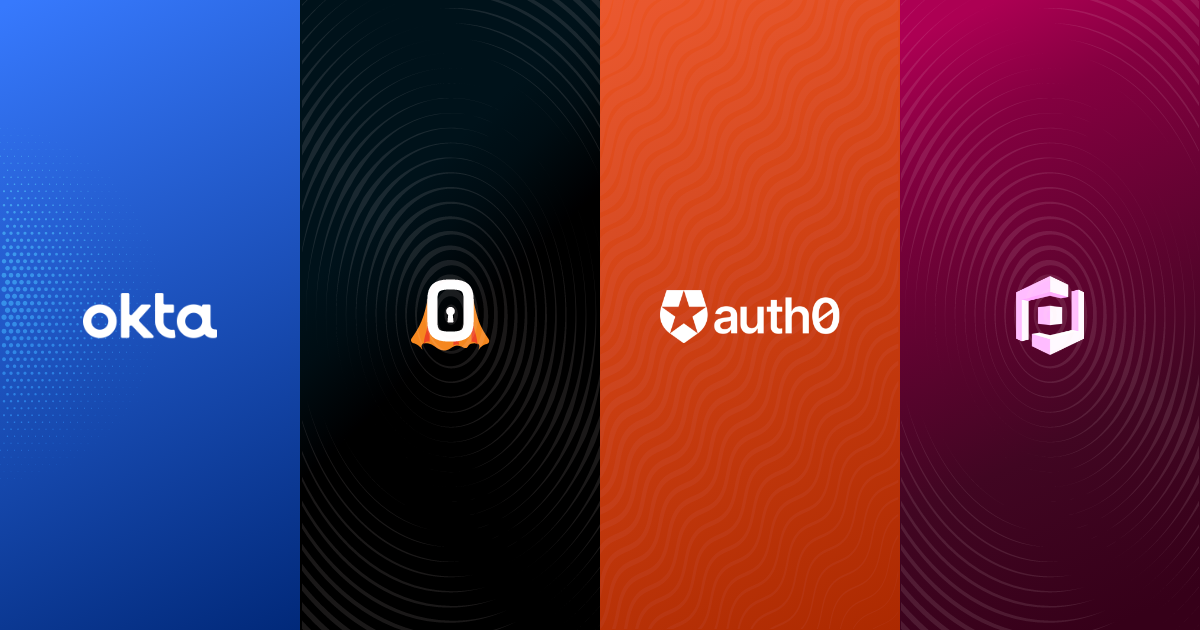When it comes to choosing an authentication provider, businesses have several options. This comparison of Auth0, Okta, Cognito, SuperTokens, and other tools will help you make an informed decision based on key features, pricing, limitations, and when to use each solution.
Table of Contents
SuperTokens
SuperTokens is an open-source authentication solution designed for developers who want flexibility and control over their authentication flow.
Key Features
- Open-source and self-hosted
- Easy integration with frontend and backend frameworks
- Support for various authentication methods including email/password, social login, and passwordless
- Granular control over sessions and JWTs
- Advanced security features like anti-CSRF and token theft detection
Pricing
SuperTokens offers a free open-source version with optional paid features like Multi Factor Authentication, Multi-Tenancy and Account Linking. The Managed serice is free for customers with less than 5000 MAUs, post wchich customers will be billed $0.02 per MAU. Enterprise pricing is available on request and includes additional features such as SLA, dedicated support, and custom SLAs.
Limitations
- Support for a limited number of backend languages and frameworks.
- Limited integrations compared to some enterprise solutions.
When to Use It
Use SuperTokens if you need a flexible, open-source solution with strong session management and advanced security features, and are comfortable managing your own infrastructure.
Note: As of 2025, SuperTokens now supports Unified login across multiple domains, Machine to Machine Authentication and a suite of Attack protection features, making it suitble for enterprise use cases.
Okta
Okta is a comprehensive identity management solution designed for large enterprises needing advanced features and integrations.
Key Features
- Robust single sign-on (SSO) capabilities
- Multi-factor authentication (MFA)
- Lifecycle management for users
- API access management
- Extensive integration ecosystem
Pricing
Okta’s pricing is tiered:
- Workforce Identity: Starts at $2 per user per month for single sign-on. Advanced features like MFA and lifecycle management are available at higher tiers.
- Workforce Identity contracts also have a minimum billing of $1500 anually.
- Customer Identity: Starts at $23 per month for 1,000 MAUs. Advanced features like adaptive MFA and API access management are priced higher.
Note: As of 2025, Okta now redirects users to Auth0 for Customer Identity use cases.
Limitations
- Can be expensive for small businesses
- Complex setup and configuration for advanced features
When to Use It
Use Okta if you are a large enterprise requiring extensive integrations, robust security features, and comprehensive identity management.
Keycloak
Keycloak is an open-source identity and access management solution aimed at developers who need customizability and control.
Key Features
- Open-source and self-hosted
- SSO and identity brokering
- Supports OAuth2, OpenID Connect, and SAML
- User federation and social login
- Admin console for user and role management
Pricing
Keycloak is free to use as it is open-source. Costs are associated with hosting and maintenance, which can vary depending on the infrastructure and scale.
Limitations
- Requires self-hosting and management
- Steeper learning curve for setup and configuration
When to Use It
Use Keycloak if you need a customizable, open-source solution with comprehensive SSO and identity brokering capabilities, and have the resources to manage it.
Cognito
Amazon Cognito is a cloud-based authentication service designed to integrate seamlessly with AWS services.
Key Features
- User sign-up, sign-in, and access control
- Social and enterprise identity federation
- Secure access to AWS resources
- Advanced security features like adaptive authentication
- Integration with AWS ecosystem
Pricing
Cognito offers a free tier with limited usage:
- Free Tier: 50,000 MAUs
- Beyond Free Tier: $0.0055 per MAU, plus additional charges for advanced security features and federation options
Note: In late 2024, Cognito have revamped their pricing model. They now have 3 different tiers. Lite, Essentials and Plus. This has drummed some conterversy as if you were just using basic email-password authentication and had 50,000 MAUs, your billing would now triple in the new scheme. Although this pricing change seems egregious, Amazon also brought down the costs for the advanced features.
Limitations
- Tied closely to the AWS ecosystem
- Limited customization compared to some alternatives
When to Use It
Use Cognito if you are heavily invested in the AWS ecosystem and need a scalable authentication solution with strong integration with AWS services.
Overall comparison of authentication providers
| Feature | SuperTokens | Auth0 | AWS Cognito | Keycloak |
|---|---|---|---|---|
| Pricing | $$ / Free | $$$$$$ | $$$/ Free | Free |
| User Satisfaction | High | Medium | Low | Low |
| Ease of UI and backend customizability | Easy | Medium | High | High |
| Size of the company offering services | Startup/Mid Market | Enterprise | Enterprise | Enterprise |
| Company provided support for free tiers | High | Low | Low | None |
| Self hostable | Yes | Yes | No | Yes |
| Open Source | Yes | No | No | Yes |
| Managed Service | Yes | Yes | Yes | No |
| Supported Cloud Providers | All | All | AWS | All |
| Compliance (SOC2, GDPR) | Yes | Yes | Yes | Self hosted |
| User management dashboard | Yes | Yes | Yes | Yes |
| Passwordless login (email + phone no) | Yes | Yes | Partial | Yes |
| Social and Email Password login | Yes | Yes | Yes | Yes |
| Custom Open ID connector | Yes | Yes | Yes | Yes |
| SAML Login | Yes | Yes | Yes | Yes |
| Unified login | Yes | Yes | Yes | Yes |
| External Database | Yes | Yes | No | Yes |
| SLA guarantees | Yes | Yes | Yes | No |
| 2FA / MFA | Yes | Yes | Yes | Yes |
| Roles and permissions | Yes | Yes | Yes | Yes |
| Web3 login | No | Yes | No | No |
| Machine to machine | Yes | Yes | Yes | Yes |
| Multi tenancy | Yes | Yes | Limit to 4 | Yes |
| Cookie based session management (Out of the box) | Yes | No | No | No |
| Customize Emails and SMS | Yes | Yes | Partial | Partial |
For more details, you can visit the SuperTokens Pricing page.
What to Look for in an Auth0 Alternative?
When choosing an alternative to Auth0, consider the following factors:
Factor 1: Integration and Ecosystem Compatibility
Ensure the solution integrates well with your existing tech stack and supports the identity providers and protocols you need.
Factor 2: Customizability and Control
Evaluate the level of customization and control you require over the authentication process and user data.
Factor 3: Migration and Vendor Lock-in
Priorities change and so do companies. Between price hikes or a catastrophic faliure, there are a number of reasons why you may want to migrate away from an auth solution. Make sure the product you chose does not lock you into the their eco system.
Factor 4: Pricing and Scalability
Consider your budget and the solution’s ability to scale with your user base and feature requirements.
Conclusion
Choosing the right authentication solution depends on your specific needs, including integration requirements, control over authentication processes, and budget constraints. SuperTokens, Okta, Keycloak, and Cognito each offer unique strengths, so evaluate them based on your priorities to find the best fit for your organization.





